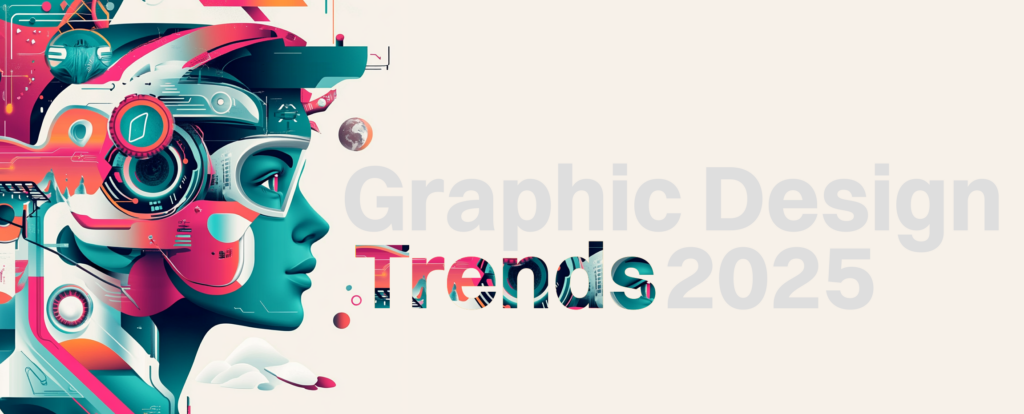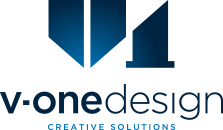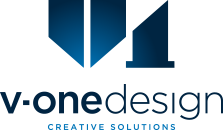
1. AI-driven design
Artificial Intelligence (AI) is transforming the creative process – including our own. From generative design tools to AI-assisted layout creation, these technologies are enabling designers to work faster and smarter. AI can create intricate, data-driven visuals, tailor designs to specific audiences, and even iterate on concepts in real-time.
Marketing teams can use AI tools for rapid prototyping and personalization. For example, creating multiple banner ad variations tailored to specific demographics.
When to embrace: Use AI for efficiency and idea generation, but ensure the final creative direction is overseen by human designers to maintain authenticity.
2. Maximalism returns
After years of minimalism dominating design, maximalism is making a comeback. Think bold colours, clashing patterns, layered elements and a sense of organised chaos. This trend captures attention in a saturated, digital landscape.
Maximalism works well for event promotions, social media campaigns and brands aiming to convey energy and creativity.
When to embrace: If your brand thrives on boldness and vibrancy, maximalism can set you apart. But skip it if your brand identity leans toward simplicity or sophistication.
3. Sustainability and natural aesthetics
Eco-consciousness continues to influence design trends with a focus on organic textures, earthy tones and visuals inspired by nature. This trend reflects growing consumer demand for environmentally responsible brands.
Incorporate sustainable themes into product packaging, website design and branding materials to align with green initiatives.
When to embrace: This trend works well for industries such as food, wellness and lifestyle. But avoid forcing it if sustainability isn’t a core value of your brand.
4. Motion graphics dominate
With the rise of short-form video and interactive content, motion graphics are becoming a key design element. Animated logos, kinetic typography, and micro-interactions bring static designs to life and capture audience attention.
Use motion graphics in social media ads, website headers and in presentations to enhance engagement.
When to embrace: Motion graphics are a must for digital-first campaigns. Even if your campaign is strictly print-focused, promote it on social media with motion graphics.
5. Retro-futurism
Retro-futurism blends nostalgic design elements with modern aesthetics, offering a sense of familiarity and innovation. Neon hues, metallic textures and geometric patterns dominate this trend.
Retro-futurism Ideal for tech brands, entertainment or campaigns targeting Gen Z and Millennials.
When to embrace: Use it sparingly unless it aligns with your brand’s narrative. Warning: overuse can appear gimmicky.
Final Thoughts
Staying ahead in graphic design requires discernment. Not every trend will align with your brand’s identity or goals but when evaluating trends, consider:
- Your audience: Will this trend resonate with their preferences?
- Your brand: Does this trend align with your values and identity?
- Your objectives: Will adopting this trend help achieve your campaign’s goals?
By selectively embracing trends that align with your strategy, you can ensure your designs remain fresh, impactful and true to your brand.

